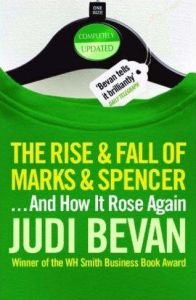Join getAbstract to access the summary!

Join getAbstract to access the summary!
Judi Bevan
The Rise & Fall of Marks & Spencer
... and How It Rose Again
Profile Books, 2007
What's inside?
How Marks & Spencer grew, got into trouble and fought its way back (the inside story of Marks and Sparks)
Recommendation
Marks & Spencer is more than a British retailer of smart fashions at good value; it has deep roots in the British psyche. Generations have worked for the company or its suppliers, taking pride in its successes and suffering through its troubles. Judi Bevan captures that story in this lively, compelling history, introducing you to all of its executives and primary players. The store changed over time as the founders and their descendants finally gave way to professional managers who viewed M&S as a vehicle for personal ambition rather than as a family institution. To be fair, the world was changing, but the push for profits at all costs betrayed the company’s principles. Chairman Stuart Rose has revived the company’s culture while helping it flourish in a modern competitive environment. Therein lies a tale that getAbstract warmly recommends.
Summary
About the Author
Judi Bevan is a London-based freelance journalist who covers financial subjects

















Comment on this summary